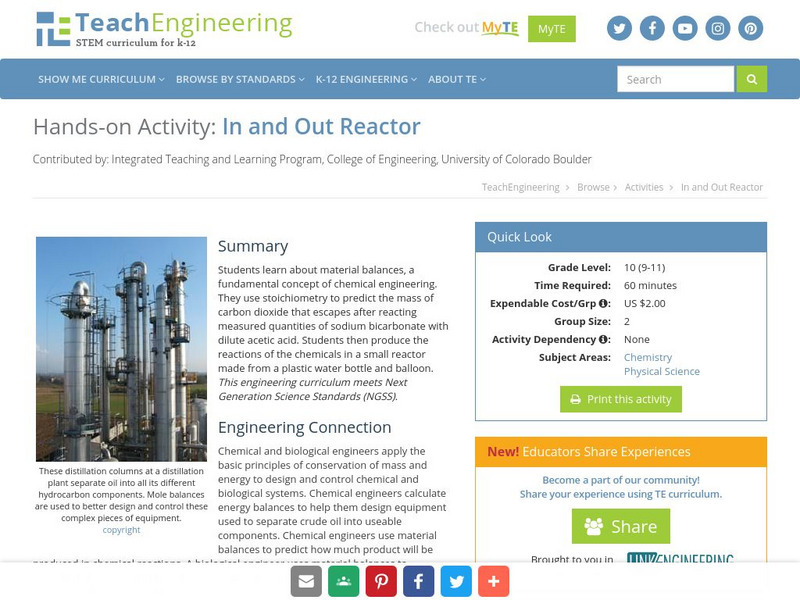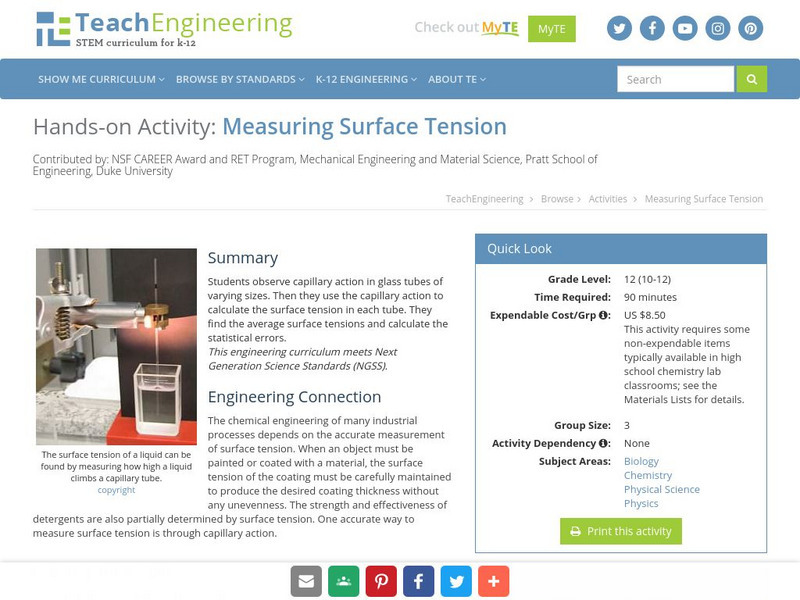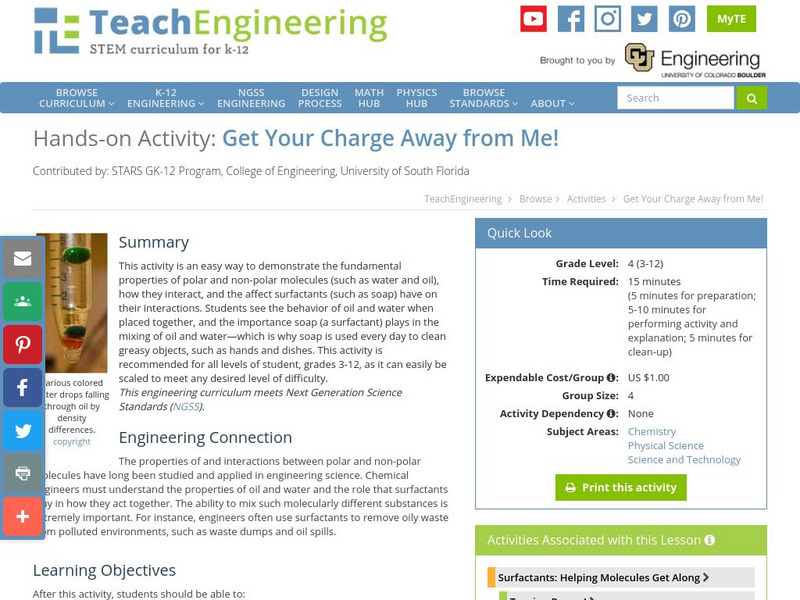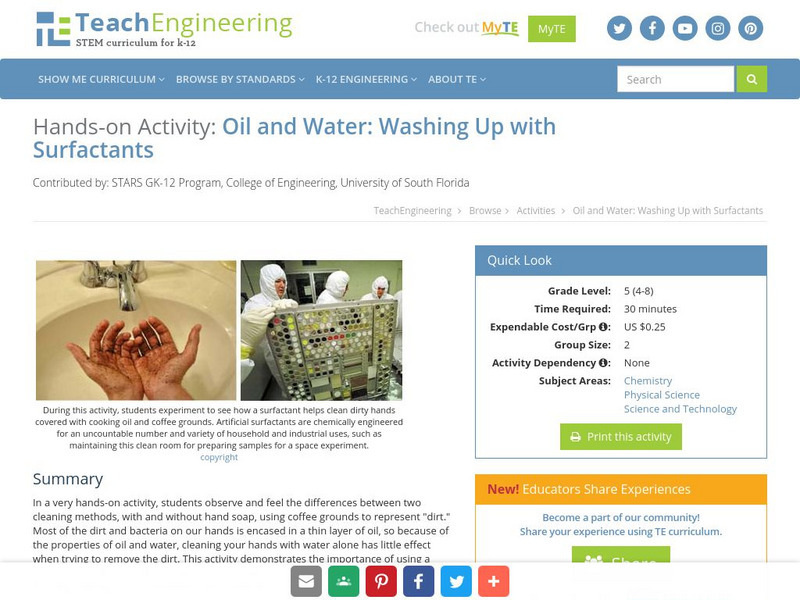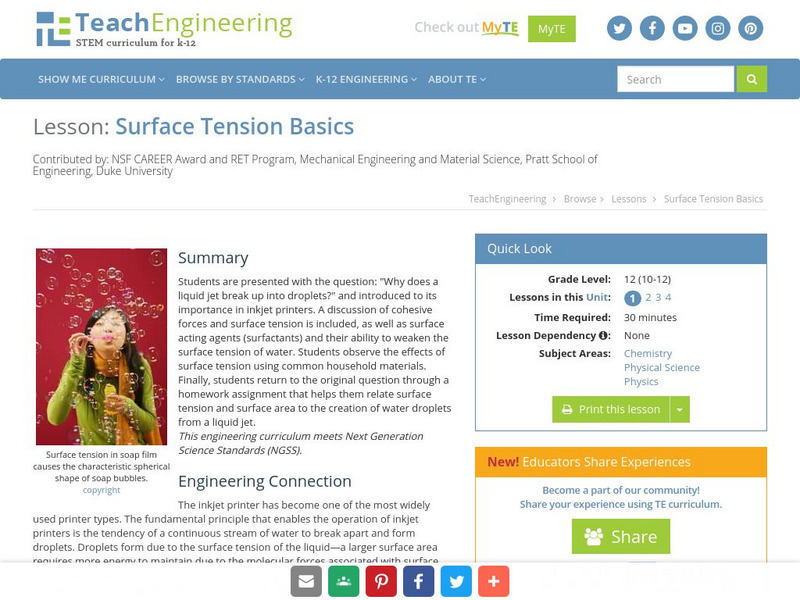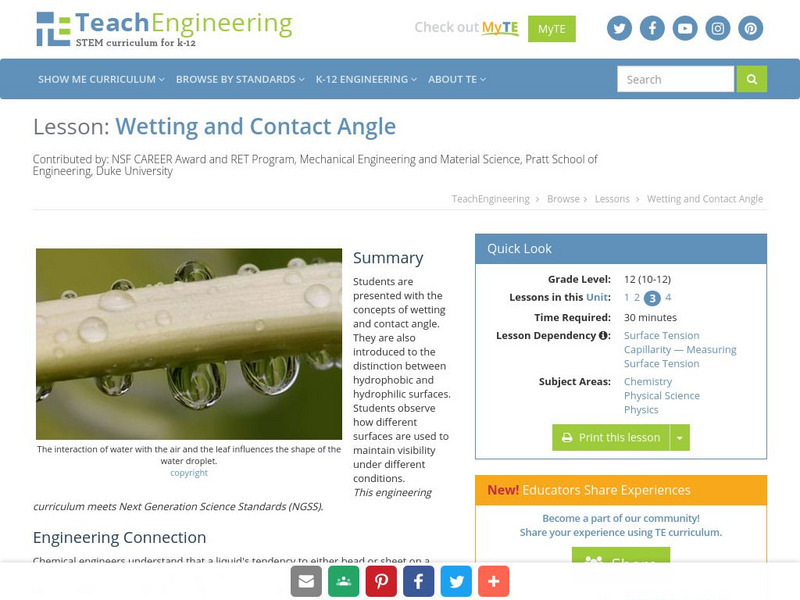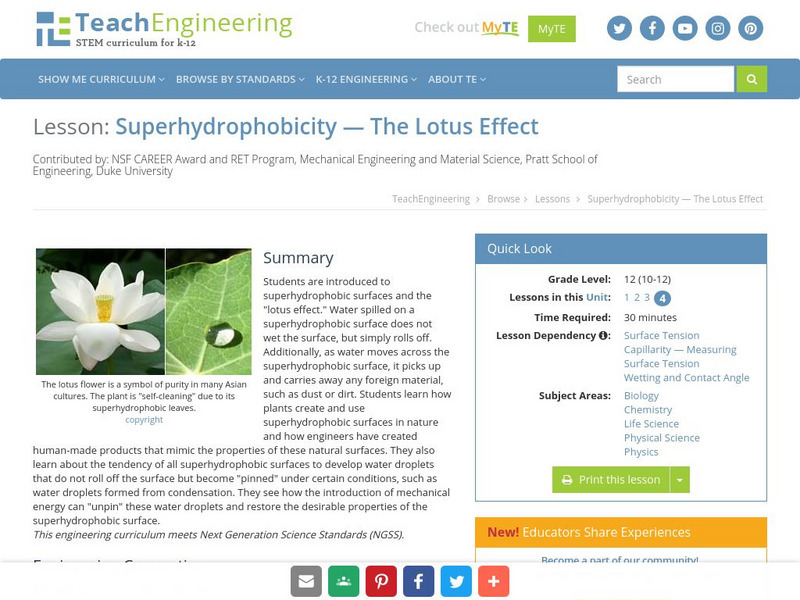Hi, what do you want to do?
TeachEngineering
Teach Engineering: In and Out Reactor
Students learn about material balances, a fundamental concept of chemical engineering. They use stoichiometry to predict the mass of carbon dioxide that escapes after reacting measured quantities of sodium bicarbonate with dilute acetic...
TeachEngineering
Teach Engineering: Measuring Surface Tension
Students observe capillary action in glass tubes of varying sizes. Then they use the capillary action to calculate the surface tension in each tube. They find the average surface tensions and calculate the statistical errors.
TeachEngineering
Teach Engineering: Investigating Contact Angle
Students observe how water acts differently when placed on hydrophilic and hydrophobic surfaces. They determine which coatings are best to cause surfaces to shed water quickly or reduce the "fogging" caused by condensation.
TeachEngineering
Teach Engineering: Exploring the Lotus Effect
Students test and observe the "self-cleaning" lotus effect using a lotus leaf and cloth treated with a synthetic lotus-like superhydrophobic coating. They also observe the Wenzel and Cassie Baxter wetting states by creating and...
TeachEngineering
Teach Engineering: All Fat Is Not Created Equally!
Students learn that fats found in the foods we eat are not all the same; they discover that physical properties of materials are related to their chemical structures. Provided with several samples of commonly used fats with different...
TeachEngineering
Teach Engineering: Molecules: The Movement of Atoms
Students work as engineers to learn about the properties of molecules and how they move in 3D space through the use of LEGO MINDSTORMS NXT robotics. They design and build molecular models and use different robotic sensors to control the...
TeachEngineering
Teach Engineering: Get Your Charge Away From Me!
This activity is an easy way to demonstrate the fundamental properties of polar and non-polar molecules (such as water and oil), how they interact, and the affect surfactants (such as soap) have on their interactions. Students see the...
TeachEngineering
Teach Engineering: Let's Get Dirty
In a very hands-on activity, students observe and feel the differences between two cleaning methods, with and without hand soap, using coffee grounds to represent "dirt."Most of the dirt and bacteria on our hands is encased in a thin...
TeachEngineering
Teach Engineering: Concentrate This! Sugar or Salt
Students investigate the property dependence between concentrations and boiling point. First, they investigate the boiling point of various liquid solutions. Then they analyze data collected from the entire class to generate two boiling...
TeachEngineering
Teach Engineering: Concentrate This! Sugar or Salt
Students investigate the property dependence between concentrations and boiling point. In Section 1, students first investigate the boiling point of various liquid solutions. In Section 2 they analyze data collected from the entire class...
TeachEngineering
Teach Engineering: Surface Tension Basics
Students are presented with the question: "Why does a liquid jet break up into droplets?" and introduced to its importance in inkjet printers. A discussion of cohesive forces and surface tension is included, as well as surface acting...
TeachEngineering
Teach Engineering: Wetting and Contact Angle
Students are presented with the concepts of wetting and contact angle. They are also introduced to the distinction between hydrophobic and hydrophilic surfaces. Students observe how different surfaces are used to maintain visibility...
TeachEngineering
Teach Engineering: Superhydrophobicity: The Lotus Effect
Students are introduced to superhydrophobic surfaces and the "lotus effect." Water spilled on a superhydrophobic surface does not wet the surface, but simply rolls off. Additionally, as water moves across the superhydrophobic surface, it...
TeachEngineering
Teach Engineering: Surfactants: Helping Molecules Get Along
Students learn about the basics of molecules and how they interact with each other. They learn about the idea of polar and non-polar molecules and how they act with other fluids and surfaces. Students acquire a conceptual understanding...
TeachEngineering
Teach Engineering: Common and Natural Logarithms and Solving Equations
Students continue an examination of logarithms in the Research and Revise stage by studying two types of logarithms--common logarithms and natural logarithm. For this study, they take notes about the two special types of logarithms, why...
Cosmo Learning
Cosmo Learning: Introduction to Solid State Chemistry
A collection of video lectures from a course that investigates the application of basic chemistry principals to engineering systems. The course draws from industrial practice to give examples of the application in engineering systems. In...
Cosmo Learning
Cosmo Learning: Chemical Reaction Engineering
A collection of video lectures from a chemical reaction engineering course taught at the National Programme on Technology Enhanced Learning. In thirty-nine lectures, the course covers topics including chemical reactions, thermodynamics,...





